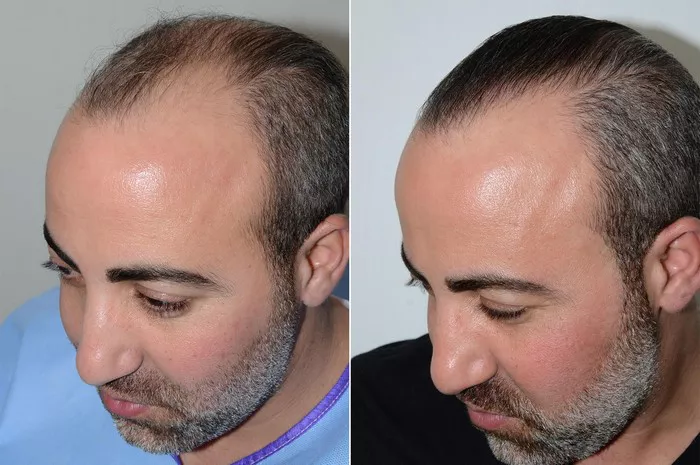Hair transplant surgeries have become increasingly popular as individuals seek to regain their lost hair and enhance their appearance. However, many patients often wonder if they can walk immediately after the procedure. In this comprehensive guide, we will address this concern and provide insights into post-transplant recovery, allowing you to make informed decisions about your surgery. So, can you walk after a hair transplant? Let’s dive into the details.
1. Immediate Post-Transplant Period: Rest is Key
Immediately after your hair transplant surgery, your scalp will be sensitive and require special care. Walking should be minimized during this initial stage to prevent any potential damage to the newly transplanted hair follicles. The first 24-48 hours are crucial:
a. Stay in the Clinic
Most clinics recommend that you rest for a few hours at the clinic after the surgery. This allows the medical staff to monitor your condition and ensure that you’re ready for the journey back home.
b. Arrange for a Ride
Ensure you have someone available to drive you home after the surgery. You should not drive yourself due to the sedative effects of the procedure.
2. Days 2-7: Limited Walking and Careful Movement
During the first week following the hair transplant, your focus should remain on rest and minimizing any potential harm to your newly transplanted grafts. Here’s what you need to consider:
a. Gentle Walks Only
You can engage in short, gentle walks around your home to prevent stiffness, but strenuous physical activity should be avoided. Make sure your head is covered to protect the grafts from the sun.
b. Avoid Bending Over
Bending over can cause additional pressure on your scalp, so it’s advisable to avoid it. If you need to pick something up from the floor, use your knees rather than bending at the waist.
c. Follow Post-Transplant Care Instructions
Your surgeon will provide you with specific post-transplant care instructions. These instructions may include recommendations for washing your hair, applying ointment, and avoiding certain products or activities.
3. Week 2-4: Gradual Resumption of Normal Activities
As you progress through the second and third weeks post-transplant, you can gradually resume your daily activities. Keep in mind the following considerations:
a. Gentle Exercise
You can start incorporating light exercises, such as walking or cycling, into your routine. However, avoid any activities that involve excessive sweating, as sweat can irritate your healing scalp.
b. Continued Sun Protection
Continue to shield your scalp from direct sunlight. You can wear a hat or use sunscreen recommended by your surgeon.
c. Monitor Healing Progress
Pay close attention to your scalp’s healing process. If you notice any unusual redness, swelling, or discomfort, consult your surgeon immediately.
4. Months 1-3: Vigilance in Hair Care
By the time you reach the first three months post-transplant, you’ll notice the initial results of your procedure. Here’s how to ensure optimal hair growth:
a. Regular Shampooing
Follow your surgeon’s guidelines for washing your hair regularly. Gentle shampooing and care will help to maintain healthy hair growth.
b. Avoid Harsh Styling Products
Stay away from harsh styling products, heat treatments, and excessive brushing, as these can damage your newly growing hair.
c. Patience is Key
While you may see some new hair growth, remember that the full results of your hair transplant may take up to a year to become evident. Be patient and follow your surgeon’s advice diligently.
5. The Importance of Professional Guidance
Throughout the post-transplant journey, professional guidance is essential. Here are a few key reasons to rely on your surgeon’s expertise:
a. Customized Care
Every patient’s needs and healing processes are unique. Your surgeon will provide personalized guidance to ensure the best possible results.
b. Timely Interventions
In the event of complications or concerns, your surgeon can provide timely interventions, minimizing the risk of adverse effects on your transplant.
c. Maximizing Success
By following your surgeon’s recommendations, you can maximize the success of your hair transplant and enjoy the long-term benefits.
See Also: When Can I Dye My Hair After Hair Transplantation: A Full Guide
In conclusion
The ability to walk after a hair transplant surgery largely depends on the post-surgery timeline and your surgeon’s recommendations. While immediate walking is discouraged, a gradual resumption of normal activities is encouraged as you progress through the recovery stages. Always prioritize professional guidance and follow the post-transplant care instructions provided by your surgeon to ensure the best possible results and a successful hair transplant journey. Remember that patience and proper care are key to achieving your desired outcome.


